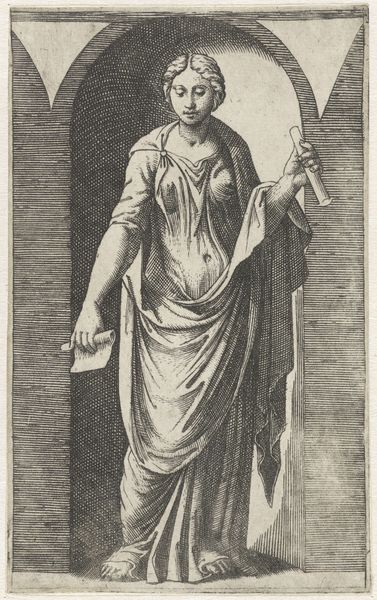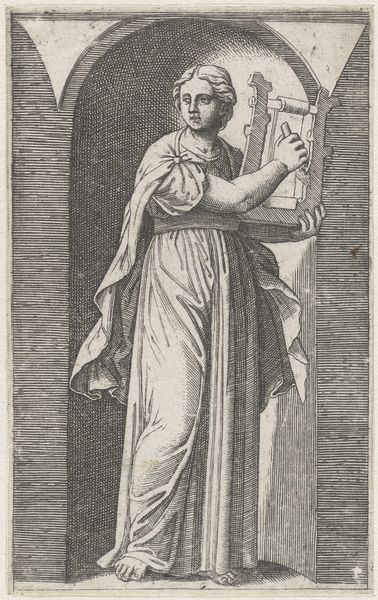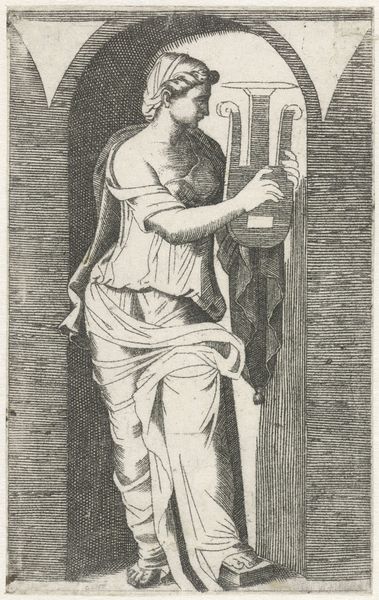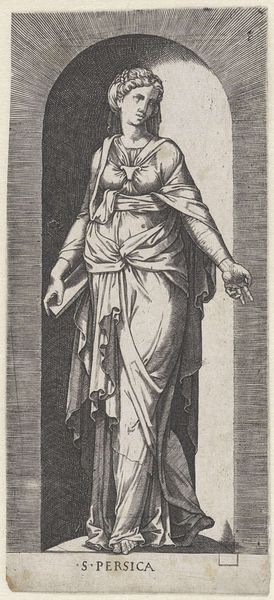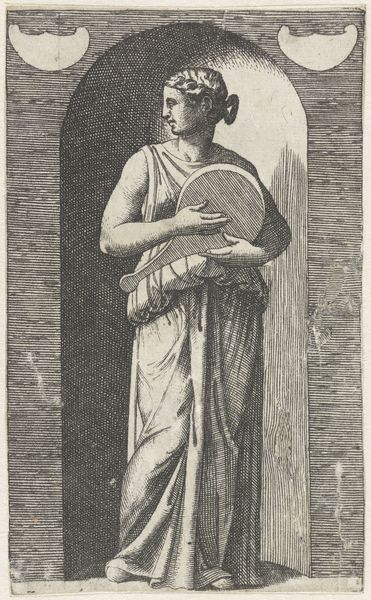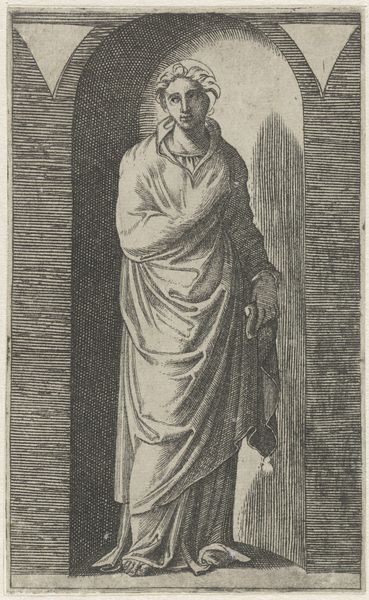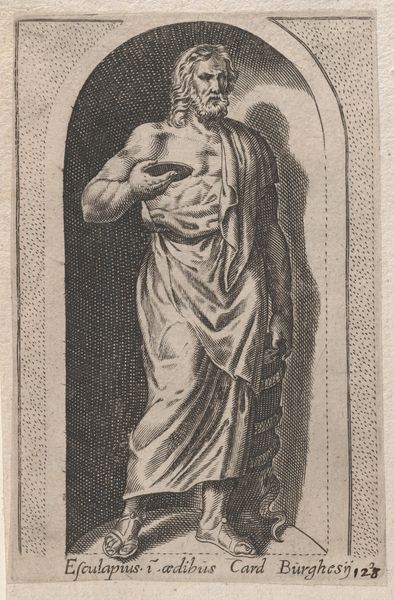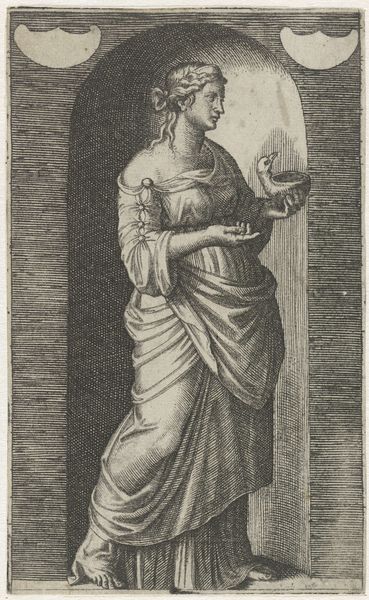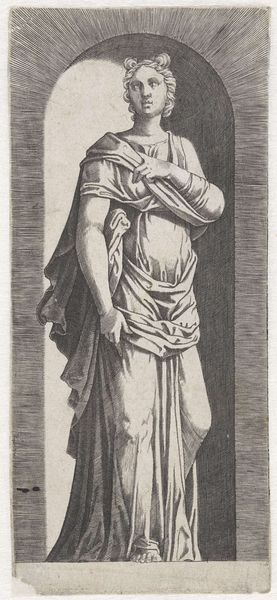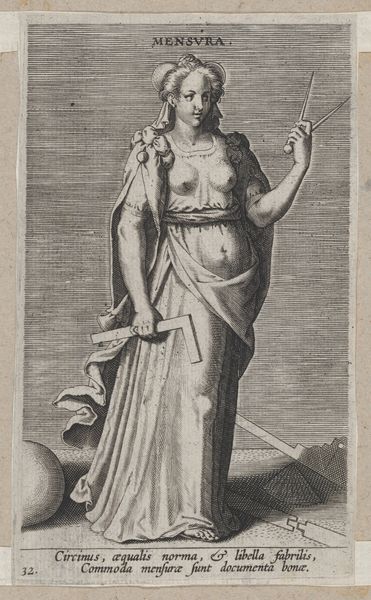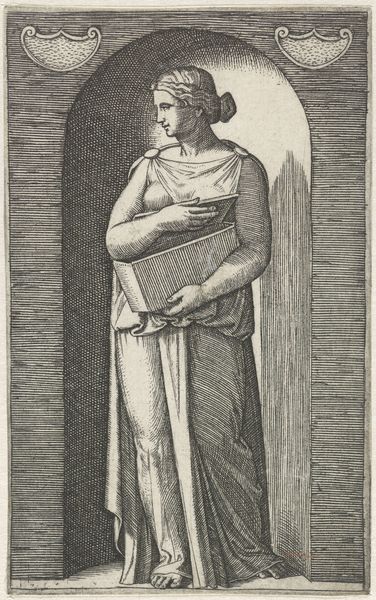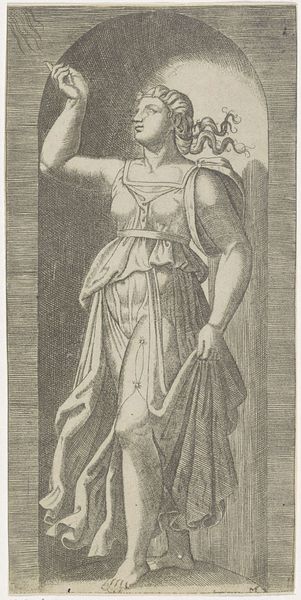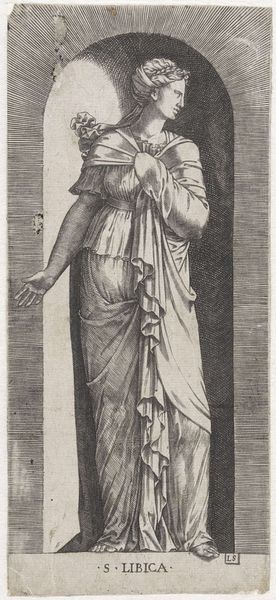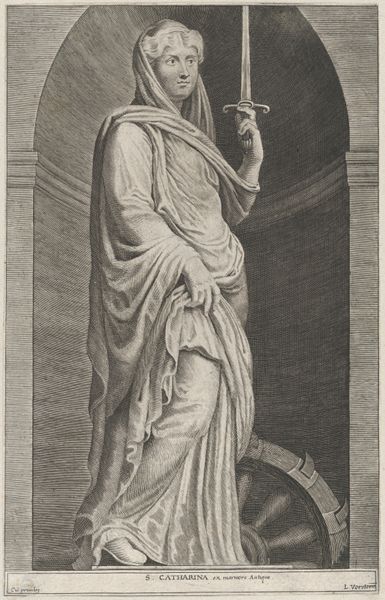
engraving
#
old engraving style
#
figuration
#
line
#
history-painting
#
italian-renaissance
#
engraving
Dimensions: height 128 mm, width 80 mm
Copyright: Rijks Museum: Open Domain
Curator: This engraving, dating from 1511 to 1520, is by Marcantonio Raimondi. It’s entitled "Muze Thalia met masker staand in nis," or "Muse Thalia with Mask Standing in Niche." It resides here at the Rijksmuseum. Editor: It has a very serene, almost melancholic quality. The muse appears so poised, yet there's a weightiness conveyed through the stark contrast of light and shadow, achieved simply through line work. The mask is so blank! Curator: Yes, Raimondi's technical skill really shines through. This piece demonstrates the importance of engraving as a means of disseminating artistic ideas during the Renaissance. Note how the line work creates form and texture—essentially mass production meeting a high art sensibility. Editor: And how interesting that this is Thalia, the muse of comedy and idyllic poetry! Placing her with the mask begs so many questions. Is it about performance? Is it about concealing identity? Does the blank mask symbolize something? Curator: Consider, too, the role of Raimondi. He wasn't inventing imagery so much as translating pre-existing drawings and paintings, meaning his work circulated copies. The material process served to distribute these Renaissance ideals widely. What does that say about accessibility of the arts in early modern Europe? Editor: It highlights how social constructs were formed through representation, particularly around classical figures. She appears almost confrontational holding the mask towards the viewer, engaging us directly in the theatrical. Think about how power operates behind and through masking. Who really holds the agency here? Curator: It's fascinating to consider Raimondi's choices: his conscious decisions when re-presenting it through the act of engraving and reproducing someone else’s conception, how he prioritized labor, line weight. It reveals the materiality and commercial forces driving artistic production. Editor: Absolutely. It invites us to challenge the notion of originality and explore the intersections of gender, class, and representation. It compels viewers to consider not just what is shown but who it is being shown to and for what purpose, which for Raimondi’s art became its purpose and commercial value, thus influencing generations of prints and interpretations! Curator: Well, this piece makes me newly consider the importance of printmaking as an enterprise. Editor: For me, this engraving prompts reflection on the theater and broader implications within cultural norms!
Comments
No comments
Be the first to comment and join the conversation on the ultimate creative platform.
